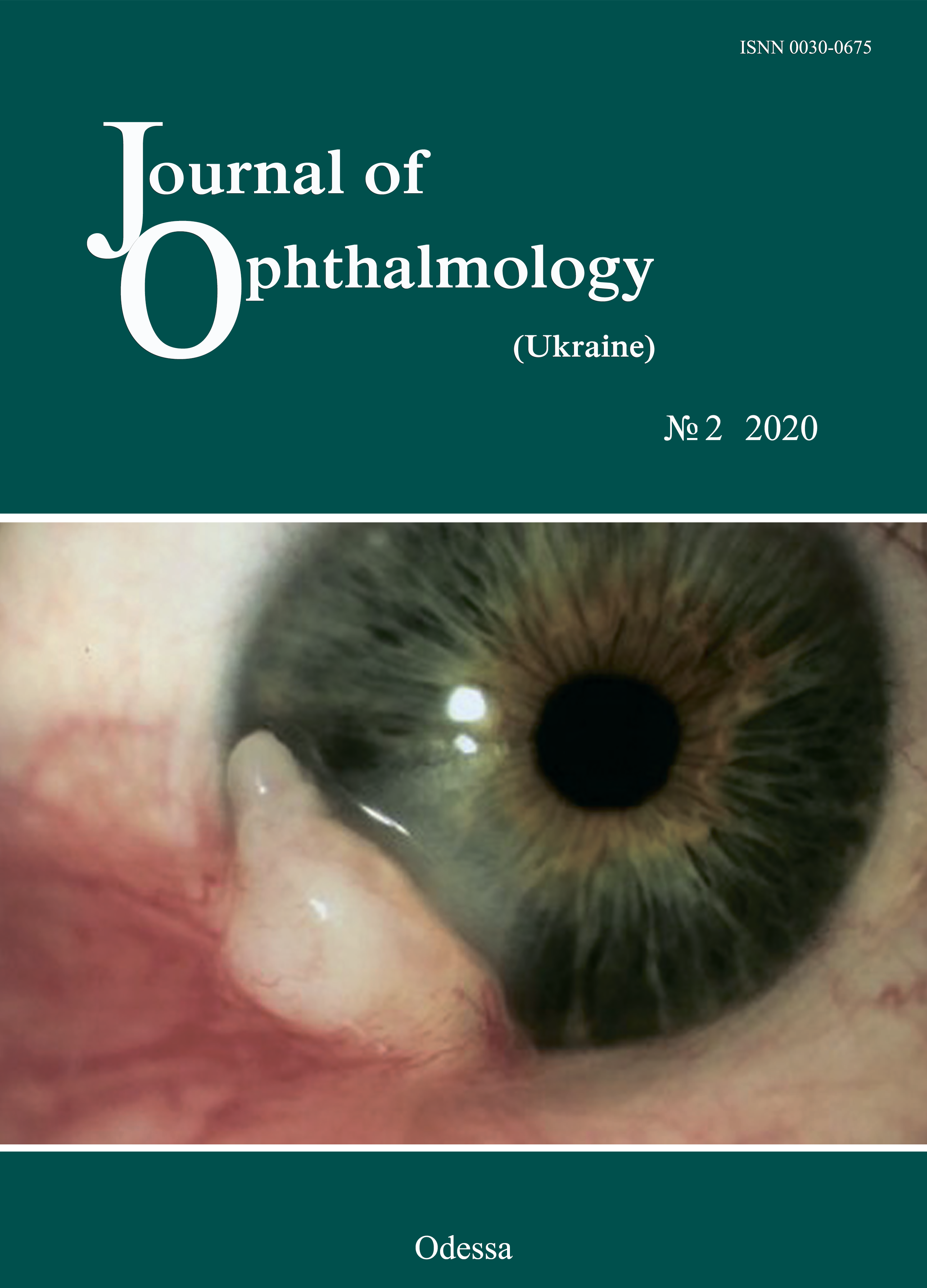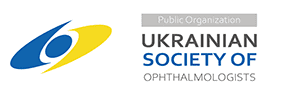Effect of irrigation solution temperature on the duration of intraocular bleeding during vitrectomy (experimental study)
DOI:
https://doi.org/10.31288/oftalmolzh202026064Keywords:
vitrectomy, irrigation fluid temperature, rabbit eye, intraocular bleedingAbstract
Background: Bleeding in vitreoretinal patients during and early after vitrectomy is still a challenge that needs to be addressed.
Purpose: To assess the effect of irrigation fluid temperature on intraocular bleeding time in rabbits during vitrectomy.
Material and Methods: Twelve Chinchilla rabbits (24 eyes) were included in this study and divided into four groups of 3 animals (6 eyes) each based on vitrectomy irrigation fluid temperature: group 1 (5° C), group 2 (10° C), group 3 (22° C), and group 4 (36° C). The ambient operating room temperature was between 22 °С and 24 °С.
Results: The duration of intraocular bleeding in groups 1, 2, 3 and 4 was 88.3 ± 46.0 s, 34.8 ± 30 s, 63 ± 23.5 s, and 21.1 ± 9.5 s, respectively.
Conclusion: In a rabbit model of intraocular bleeding, use of irrigation fluid of 36 °С (i.e., conditions of mild hypothermia) resulted in shorter intraocular bleeding in the perioperative period of vitrectomy compared to conventional use of room-temperature irrigation fluid (21.1 ± 9.5 s against 63 ± 23.5 s). Mild hypothermia may be recommended for use in vitreoretinal surgery in patients with a high risk of bleeding.
References
1.Shishkin MM, Yuldasheva N.M. [Intravitreal injection of angiogenesis inhibitors as a stage of sparing vitreoretinal surgery of proliferative diabetic retinopathy]. Bulletin of the Pirogov National Medical and Surgery Center. 2011; 6(1):77-81. Russian.
2.Farah M, Maia M, Rodrigues EB. Dyes in Ocular Surgery: Principles for Use in Chromovitrectomy. Am J Ophthalmol. 2009;48(3);332-40. https://doi.org/10.1016/j.ajo.2009.04.003
3.Goto A, Inatani M, Inoue T, Awai-Kasaoka N, Takihara Y, Ito Y, et al. Frequency and risk factors for neovascular glaucoma after vitrectomy in eyes with proliferative diabetic retinopathy. J Glaucoma. 2013;22(7):572-6.https://doi.org/10.1097/IJG.0b013e31824d514a
4.Hasumura T, Yonemura N, Hirata A, Murata Y, Negi A. Retinal Damage by Air Infusion during Vitrectomy in Rabbit Eyes. Invest Ophthalmol Vis Sci. 2000 Dec;41(13):4300-4.
5.Hsuan JD, Brown NA, Bron AJ, Patel CK, Rosen PH. Posterior subcapsular and nuclear cataract after vitrectomy. J Cataract Refr Surg. 2001 Mar;27(3):437-44.https://doi.org/10.1016/S0886-3350(00)00585-X
6.Postel EA, Pulido JS, Byrnes GA, Heier J, Waterhouse W, Han DP, et al. Long-term follow-up of iatrogenic phototoxicity. Arch Ophthalmol. 1998 Jun;116(6):753-7.https://doi.org/10.1001/archopht.116.6.753
7.Rossi T, Querzoli G, Angelini G, Rossi A, Malvasi C, Iossa M, et al. Ocular perfusion pressure during pars plana vitrectomy: a pilot study. Invest Ophthalmol Vis Sci. 2014 Dec 2;55(12):8497-505.https://doi.org/10.1167/iovs.14-14493
8.Saito K, Fukuda N, Matsumoto T, Iribe Y, Tsunemi A, Kazama T, Yoshida-Noro C, et al. Moderate low temperature preserves the stemness of neural stem cells and suppresses apoptosis of the cells via activation of the cold-inducible RNA binding protein. Brain Res. 2010 Oct 28;1358:20-9.https://doi.org/10.1016/j.brainres.2010.08.048
9.Umanets M.M. [Effect of HF electric welding (modified generator EK-300 M1) vs diathermocougulation of major retinal vessels in rabbits]. Oftalmol Zh. 2012;4:88-92.
10.Iguchi Y, Asami T, Ueno S, Ushida H, Maruko R, Oiwa K, et al. Changes in vitreous temperature during intravitreal surgery. Invest Ophthalmol Vis Sci. 2014 Apr 11;55(4):2344-9.https://doi.org/10.1167/iovs.13-13065
11.Jabbour NM, Schepens CL, Buzney SM. Local ocular hypothermia in experimental intraocular surgery. Ophthalmology. 1988 Dec;95(12):1687-90.https://doi.org/10.1016/S0161-6420(88)32956-8
12.Rinkoff J, Machemer R, Hida T, Chandler D. Temperature-dependent light damage to the retina. Am J Ophthalmol. 1986 Oct 15;102(4):452-62.https://doi.org/10.1016/0002-9394(86)90073-5
13.Tamai K, Toumoto E, Majima A. Local hypothermia protects the retina from ischaemic injury in vitrectomy. Brit J Ophthalmol. 1997 Sep;81(9):789-94.https://doi.org/10.1136/bjo.81.9.789
14.de Bustros S, Glaser BM, Johnson MA. Thrombin infusion for the control of intraocular bleeding during vitreous surgery. Arch Ophthalmol. 1985 Jun;103(6):837-9.https://doi.org/10.1001/archopht.1985.01050060097034
15.Lee HS, Kim SH, Kim IT. Intraocular infusate with Hemocoagulase for the control of bleeding during vitreous surgery. Kor J Ophthalmol. 1989 Jun;3(1):6-10.https://doi.org/10.3341/kjo.1989.3.1.6
16.Anatychuk L, Pasyechnikova N, Zadorozhnyy O, Nazaretian R, Myrnenko V, Kobylyanskyi R, Gavrilyuk N. Original device and approaches to the study of temperature distribution in various eye segments (experimental study). J Ophthalmol (Ukraine). 2015;6:50-53.https://doi.org/10.31288/oftalmolzh201565053
17.Polderman KH, Herold I. Therapeutic hypothermia and controlled normothermia in the ICU: Practical considerations, side effects, and cooling methods. Crit Care Med. 2009 Mar;37(3):1101-20.https://doi.org/10.1097/CCM.0b013e3181962ad5
18.Yenari MA, Han HS. Neuroprotective mechanisms of hypothermia in brain ischaemia. Nat Rev Neurosci. 2012 Feb 22;13(4):267-78.https://doi.org/10.1038/nrn3174
19.Deng H, Han HS, Cheng D, Sun GH, Yenari MA. Mild hypothermia inhibits inflammation after experimental stroke and brain inflammation. Stroke. 2003 Oct;34(10):2495-501.https://doi.org/10.1161/01.STR.0000091269.67384.E7
20.Alzaga AG, Cerdan M, Varon J. Therapeutic hypothermia. Resuscitation. 2006;70(3):369-80.https://doi.org/10.1016/j.resuscitation.2006.01.017
21.Zadorozhnyy O, Nazaretian R, Myrnenko V, Naumenko V, Maltsev E, Pasyechnikova N. [Structure of the chorioretinal complex in the rabbit eye after vitrectomy. Report 2. Vitreous cavity irrigation with different temperature solutions for 60 minutes]. J Ophthalmol (Ukraine). 2018;4:49-55.
22.Zadorozhnyy O, Nazaretian R, Naumenko V, Maltsev E, Pasyechnikova N. Structure of the chorioretinal complex in the rabbit eye after vitrectomy. Report 3. Vitreous cavity irrigation with 36°С solution. J Ophthalmol (Ukraine). 2019;5:49-55.https://doi.org/10.31288/oftalmolzh201954955
Downloads
Published
How to Cite
Issue
Section
License
Copyright (c) 2025 Р. Э. Назаретян, О. С. Задорожный, Н. Н. Уманец, В. А. Науменко, Н. В. Пасечникова

This work is licensed under a Creative Commons Attribution 4.0 International License.
This work is licensed under a Creative Commons Attribution 4.0 International (CC BY 4.0) that allows users to read, download, copy, distribute, print, search, or link to the full texts of the articles, or use them for any other lawful purpose, without asking prior permission from the publisher or the author as long as they cite the source.
COPYRIGHT NOTICE
Authors who publish in this journal agree to the following terms:
- Authors hold copyright immediately after publication of their works and retain publishing rights without any restrictions.
- The copyright commencement date complies the publication date of the issue, where the article is included in.
DEPOSIT POLICY
- Authors are permitted and encouraged to post their work online (e.g., in institutional repositories or on their website) during the editorial process, as it can lead to productive exchanges, as well as earlier and greater citation of published work.
- Authors are able to enter into separate, additional contractual arrangements for the non-exclusive distribution of the journal's published version of the work with an acknowledgement of its initial publication in this journal.
- Post-print (post-refereeing manuscript version) and publisher's PDF-version self-archiving is allowed.
- Archiving the pre-print (pre-refereeing manuscript version) not allowed.












